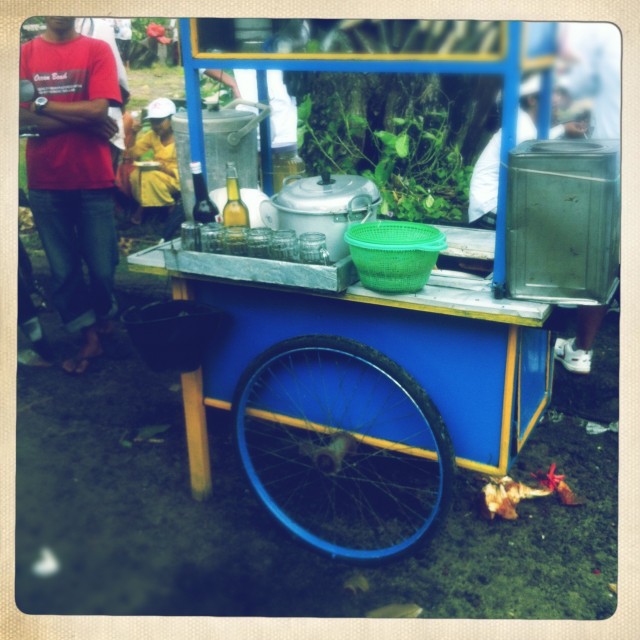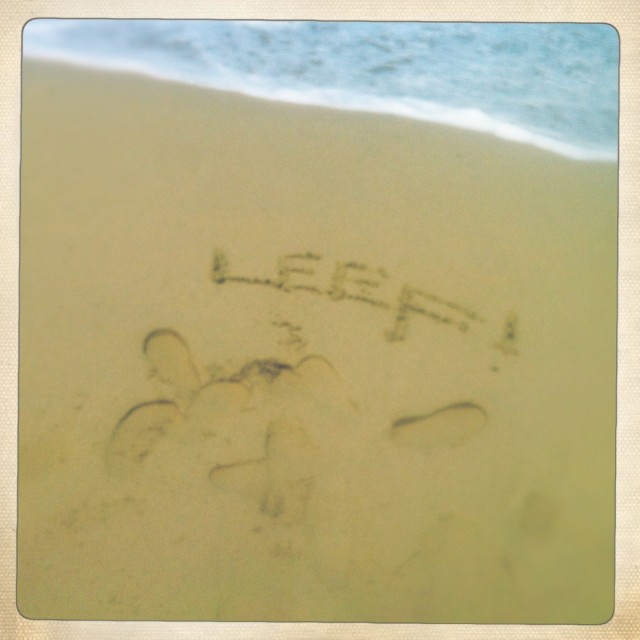Not everybody loves them. The Indonesian mobile food-cart, the kaki lima has an infamous reputation. Most people find them annoying and claim they cause even more chaos in the already busy city streets. Others even find them an eyesore. In some places, notably Ubud on Bali and also in most newly gated communities all over Java, kaki lima are banned. Only some, like me, admire their charm, the way they are built and the way they are skilfully manoeuvred through busy traffic or a swampy rice field. Here are five things to love about Indonesia’s famous Five-Footers.
The first thing, of course, is its name. Kaki lima means five feet, due to the fact that originally these carts all had five legs. That is: two wheels plus back stand plus the two legs of the guy that is pushing it. How could you not love something with a name like that?
Second, the kaki lima has no strict opening hours. On early mornings or late at night, if you’re hungry, there is always one ready to serve you with mie bakso (the popular soup with meatballs), gado gado, chicken satay, martabak and innumerable other snacks and meals. You name it, there’s a kaki lima that sells it.
Thirdly, kaki lima food is arguably the cheapest you can get in Indonesia. Not more than a few thousand rupiahs shorter, and you are on your way again, your belly filled to the rim. It may not always be gourmet-delicious, but at such low prices, the food sometimes is surprisingly tasty. And if not, it will at least satisfy most of your cravings, just enough to get by until your next meal.
Kaki lima are often the place where new food inventions are cooked up. Indonesian cuisine is constantly renewing itself and new trends are often popularized by kaki lima. Some new trends are for example kentang arab (spicy fried potatoes), cimol (fried puffy flour balls), kripik setan (crackers from cassava). Try them all and savor Indonesia!
The fourth thing is that you will never have to go look for it, because the kaki lima will look for you. Just wait for the ringing of a bell or the clicking of a piece of metal, and you know one is on its way. And it doesn’t matter where you are. On a lazy stroll along the beach or on your way home from work, one will always show up just in time. Each kaki lima has their own distinct sound, by which people can recognize what’s cooking.
Finally, they are nice to look at and sometimes dead charming. The designs are endlessly varied and some truly have character: weather worn and self-repaired. I particularly like looking for interesting details on kaki lima, like functional little constructions such as plastic bottle or umbrella holders and little makeshift stools.
So, I guess my point is that kaki lima should not be undervalued. With its cheap food, 24/7 on the spot service and distinct character, the kaki lima and Indonesia have an indissolubly bond. Or to put it simply, Indonesia would not be as vibrant, charming or beautiful without them. So to all you kaki lima critics out there, eat this!
Deze blog verscheen eerder op Latitudes







